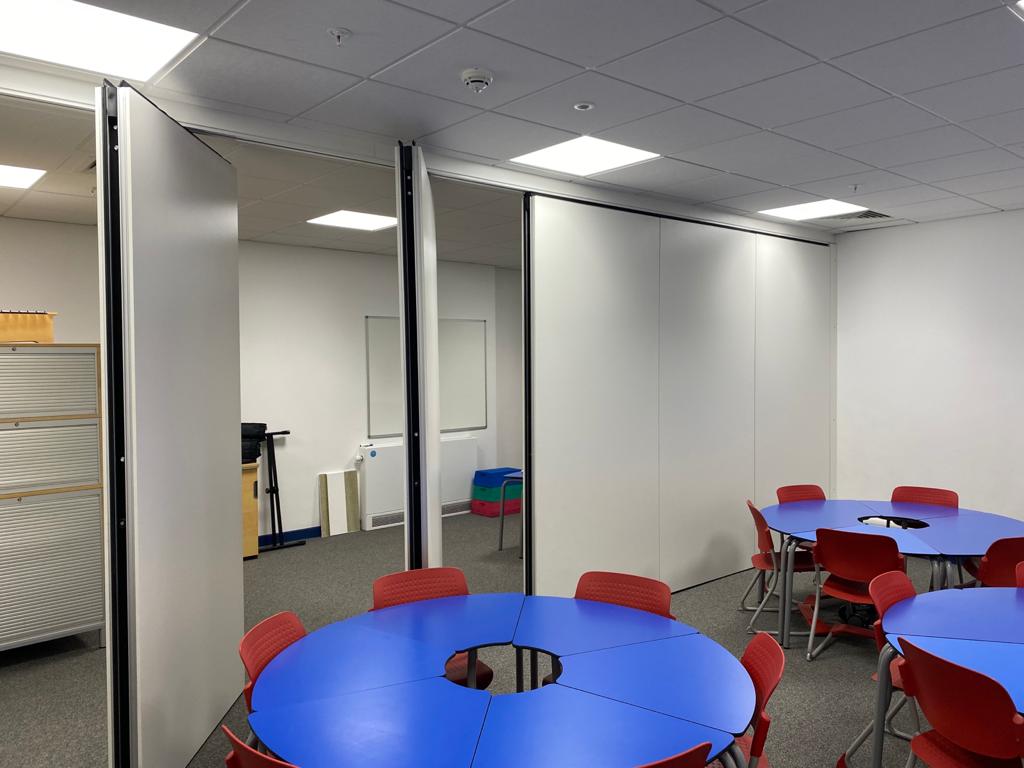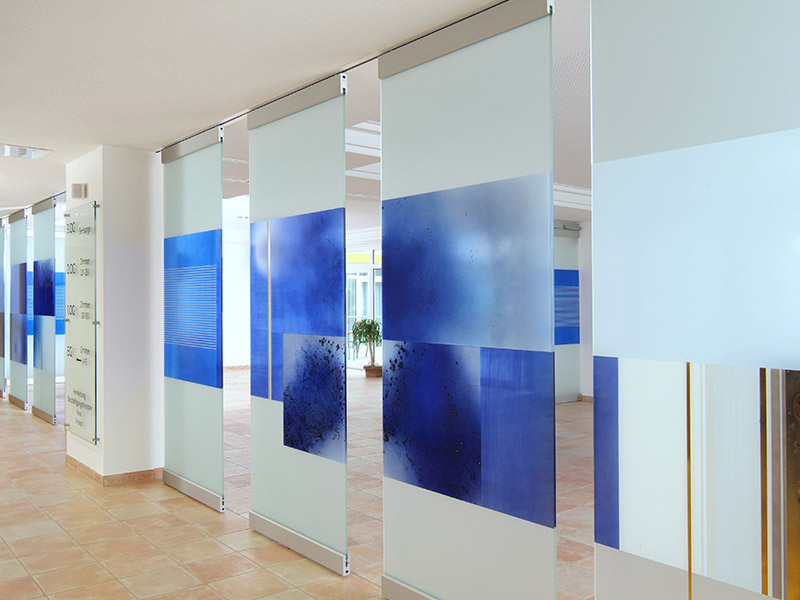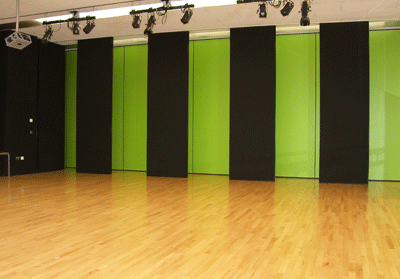Essential Benefits of Movable Walls for Schools: Maximizing Space & Learning
Modern education is a dynamic process, constantly evolving to meet the needs of diverse learners. Yet, the physical environments in many schools remain static, built for a one-size-fits-all model of instruction that no longer serves students or educators effectively. This disconnect between contemporary pedagogy and rigid architecture presents a significant challenge. Schools need spaces that can adapt in real-time to support project-based learning, small group collaboration, individualized instruction, and large-scale events. The solution lies not in costly, time-consuming construction, but in embracing architectural flexibility. Movable walls are emerging as an essential tool for transforming educational spaces, offering a powerful way to maximize both physical footprints and learning potential.
The Static Classroom Challenge: Limitations of Traditional School Design
Traditional school design, characterized by corridors lined with identical, self-contained classrooms, inherently limits pedagogical innovation. A single, fixed space struggles to accommodate the varied activities of a modern curriculum. One moment a teacher might need an open area for a group presentation, and the next, quiet, partitioned zones for focused testing or individual support. The physical permanence of cinder block and drywall walls creates an inflexible environment that forces teaching methods to conform to the space, rather than the space adapting to the needs of the lesson. This rigidity can stifle creativity, hinder collaboration, and fail to cater to the diverse learning styles present in every classroom.
Introducing Movable Walls: A Dynamic Solution for Modern Pedagogy
Movable walls, also known as operable partitions, are high-performance, acoustically engineered panels that can be easily extended to divide a large room or retracted to open it up. Unlike flimsy dividers, these are robust, permanent-feeling structures when deployed, offering superior sound insulation and a range of functional finishes. They glide along ceiling-mounted tracks, allowing a single staff member to reconfigure a space in minutes without specialized tools or effort. This technology empowers schools to move beyond the limitations of the traditional building, creating truly adaptable spaces that can be tailored to the specific educational task at hand.

Beyond Walls: How Flexibility Enhances Both Space and the Learning Experience
The primary benefit of introducing movable partitions into a school setting is the profound shift from static to dynamic space management. This flexibility is not merely a convenience; it is a catalyst for enhanced learning. By enabling fluid transitions between different layouts, movable walls empower educators to design more engaging and effective lesson plans. A large multi-purpose room can host an all-school assembly in the morning, be divided into three separate classrooms for collaborative projects in the afternoon, and then be cleared again for an after-school event. This ability to adapt on demand unlocks the full potential of a school’s square footage, creating a responsive and resource-efficient learning environment.
Elevating Learning: Creating Flexible & Dynamic Educational Environments
The ultimate goal of any school facility is to support and enhance the educational mission. Movable walls contribute directly to this by creating physical spaces that are as agile and innovative as the teaching methods they are meant to house.
Supporting Diverse Learning Styles and Pedagogical Approaches
Modern pedagogy recognizes that students learn in different ways. Some thrive in collaborative groups, others require quiet for deep focus, and many benefit from a mix of direct instruction, hands-on projects, and peer-to-peer learning. Movable walls make it possible to create multiple learning zones within a single larger area. A teacher can create a quiet reading nook, a collaborative pod for group work, and a presentation space simultaneously. This empowers educators to implement differentiated instruction effectively, providing tailored settings that meet the needs of every student and unlock new teaching strategies that were previously impossible in a fixed classroom.
Seamless Configuration Changes for Varied Activities
The school day is a sequence of varied activities, each with unique spatial requirements. The transition time and effort required to change a room’s setup can be a significant barrier. Operable partitions remove this obstacle. A science classroom can be quickly divided to separate a lecture area from a hands-on lab space, preventing distractions. A large library or media center can be partitioned to host a class session while still allowing other students quiet study space. The ability to reconfigure spaces in minutes maximizes instructional time and ensures that the physical environment is always an asset, not a constraint.
Promoting Innovation and Creativity in the Learning Space
When the physical environment is flexible, it encourages both teachers and students to think more creatively about how they use it. The space itself becomes a tool for learning. Students can be empowered to reconfigure their own learning areas for specific projects, fostering a sense of ownership and autonomy. Movable walls with integrated writable surfaces, such as whiteboards or chalkboards, turn any divided space into an instant ideation zone. This adaptability fosters a culture of innovation, where the learning environment is not a passive backdrop but an active participant in the educational process.
Mastering Acoustics: Cultivating Optimal Sound Environments for Learning
An effective learning environment is a focused one. Uncontrolled noise is a primary obstacle to concentration and comprehension, and movable walls provide a powerful solution for acoustic management.
Combating Background Noise and Minimising Disturbances
In open or poorly divided spaces, sound travels easily, creating a distracting cacophony of background noise. A nearby group discussion, activity in a hallway, or a presentation in an adjacent area can disrupt an entire class. High-quality movable walls are engineered with excellent Sound Transmission Class (STC) ratings, meaning they effectively block the transfer of sound between spaces. By deploying these partitions, schools can create acoustically isolated zones, ensuring that lessons, discussions, and quiet work can proceed without interruption from neighboring activities.

Creating Acoustic Integrity for Confidentiality and Focus
Acoustic control is not just about blocking noise; it is also about ensuring privacy. Sensitive conversations, such as those during parent-teacher conferences, student counseling sessions, or special education assessments, require confidentiality. Movable partitions allow schools to create secure, private meeting spaces on demand within larger, open-plan areas like libraries or administrative offices. This same acoustic integrity provides the quiet needed for high-stakes testing or for students who are easily distracted, ensuring an environment conducive to deep focus.
Enhancing Teacher Effectiveness and Student Well-being
Constant background noise is a significant source of stress and fatigue for both teachers and students. Educators may strain their voices to be heard, while students struggle to concentrate, leading to diminished learning outcomes and increased behavioral issues. By providing superior acoustic control, movable walls help create calmer, more serene learning environments. This reduction in auditory stress improves well-being, increases student engagement, and allows teachers to communicate more effectively without having to compete with external noise.
Strategic Space Utilization: The Economical Advantage for Schools
Beyond the pedagogical benefits, movable walls offer compelling financial and operational advantages, making them a smart, strategic investment for any educational institution.
Maximizing Your School’s Existing Footprint
Space is a finite and expensive resource. Many schools face overcrowding or lack the specialized rooms they need, with the only apparent solution being a costly new building project. Movable walls offer a more sustainable and economical alternative by unlocking the hidden potential within a school’s existing footprint. A single large space, such as a cafeteria or gymnasium, can serve multiple functions throughout the day, effectively doubling or tripling its utility. This allows schools to accommodate more activities and a larger student body without the massive capital outlay of new construction.
A Cost-Effective Alternative to Permanent Renovations
When a school needs to create new rooms—be it a smaller classroom, a teacher’s office, or a conference area—the traditional approach involves contractors, demolition, and construction, a process that is both expensive and disruptive. Installing a movable wall system is significantly faster and more cost-effective than building permanent walls. The installation process creates minimal disruption to school operations, and the long-term flexibility means the space can be adapted again in the future as needs change, avoiding the repeated costs associated with fixed renovations.
Improving Overall Space Management and Operational Efficiency
Efficient space management is crucial for the smooth operation of a school. Movable partitions give facility managers and administrators an unprecedented level of control over their building. Scheduling conflicts can be resolved by dividing a single large hall to accommodate two different events simultaneously. The ability to quickly adapt spaces for assemblies, parent nights, professional development sessions, or community functions increases the building’s overall functionality and potential for revenue generation through facility rentals. This operational efficiency saves time, reduces logistical headaches, and maximizes the return on the school’s most valuable asset: its physical space.
Enhancing the School’s Aesthetic Appeal and Promoting Well-being
The physical appearance and atmosphere of a school have a tangible impact on student and staff morale. Modern movable walls are not just functional; they are sophisticated design elements that can elevate a school’s interior.
Modernizing School Interiors with Contemporary Design
Operable partitions can transform the look and feel of a school, replacing dated, static interiors with clean, contemporary, and versatile designs. With a vast array of available materials and finishes—from elegant wood veneers and durable laminates to colorful fabrics and custom graphics—these walls can be tailored to match any architectural style. This allows schools to create modern, professional-looking spaces that reflect a forward-thinking educational philosophy.
Harnessing Natural Light for a More Inviting Environment
One of the most transformative options for movable walls is the use of glass panels. Glass partitions allow for the creation of acoustically separate spaces without sacrificing the flow of natural light. This visually connects areas, making the entire building feel more open and expansive while still providing crucial sound privacy. Studies have shown that exposure to natural light improves mood, concentration, and overall well-being, making glass movable walls a powerful tool for creating healthier and more positive learning environments.
Creating an Inviting and Inspiring Atmosphere
The combined effect of modern design, enhanced natural light, and a clean, adaptable layout is a more inviting and inspiring atmosphere. Students and staff feel more valued in a well-designed and well-maintained environment. The flexibility offered by movable walls allows for the creation of visually interesting and varied spaces, moving away from monotonous, institutional design. This thoughtful approach to the school’s interior style contributes to a positive school culture where individuals feel motivated and proud of their surroundings.
Practical Considerations & Long-Term Reliability
For any solution to be viable in a school setting, it must be practical, durable, and easy to use on a daily basis. High-quality movable wall systems are engineered to meet these demands.

Ease of Operation and Daily Usability
Modern movable walls are designed for user-friendliness. Whether manually operated or fully automatic, systems are engineered for smooth, quick, and safe operation by any staff member. Panels move effortlessly along their tracks and lock securely into place, allowing for room configurations to be changed in a matter of minutes. This simplicity ensures that the walls are used to their full potential, becoming an integral and reliable part of daily school life.
Durability and High-Quality Materials for Educational Settings
Schools are high-traffic environments that demand robust and durable materials. Reputable movable wall manufacturers use high-quality components and construction techniques to ensure their products can withstand the rigors of daily use for decades. The panels, tracks, and mechanical systems are built for long-term performance and reliability, representing a sound investment in the school’s infrastructure. The wide range of available finishes also includes highly durable options resistant to wear and tear.
Sustainable Building Practices and Environmental Impact
Movable walls support sustainable building practices in several ways. By maximizing the utility of existing spaces, they reduce the need for new construction, which in turn saves raw materials and energy. Their flexibility ensures the building can adapt to future needs, extending its useful life and preventing wasteful renovations. Furthermore, many manufacturers prioritize the use of recycled and sustainable materials in their products, contributing to a healthier environment both inside and outside the school.
Beyond the Classroom: Expanding Utility Across the School Campus
While the impact on the classroom is profound, the benefits of movable walls extend to nearly every corner of a school campus, enhancing efficiency and functionality school-wide.
Versatility for School-Wide Events and Gatherings
Large spaces like auditoriums, gymnasiums, and cafeterias become vastly more versatile with the addition of operable partitions. A gym can be divided to run multiple physical education classes at the same time or to separate a sporting event from a spectator area. An auditorium can be partitioned to create smaller breakout rooms for conferences or tiered sections for different groups during an assembly. This adaptability makes hosting any event a more manageable and efficient process.
Supporting Staff Collaboration and Private Meetings
Faculty and administrative areas also benefit greatly from spatial flexibility. A large staff room can be divided to create a private meeting space or a quiet work area, fostering better collaboration and providing necessary privacy. Administrative office areas can use glass partitions to create individual offices while maintaining an open, light-filled atmosphere.
Facilitating Exam Season and Specialized Activities
During exam periods, the ability to quickly create multiple, smaller, acoustically isolated rooms is invaluable. A large hall or library can be transformed into a series of quiet examination rooms, ensuring optimal conditions for students. This same flexibility supports other specialized activities, from hosting a robotics competition in a partitioned section of the cafeteria to setting up a temporary art gallery in a main corridor.
Conclusion: Investing in a Future-Proof and Dynamic Learning Environment
In an era of educational evolution, the physical school building must evolve as well. Static, inflexible spaces are a relic of the past; the future of education requires environments that are as dynamic, responsive, and innovative as the students and educators who inhabit them. Movable walls are far more than simple room dividers; they are a strategic investment in adaptability and a foundational tool for modern pedagogy.
By providing unparalleled flexibility, superior acoustic control, and significant cost benefits, movable partitions empower schools to maximize their space, support diverse teaching styles, and create inspiring learning environments. They allow a single building to serve countless functions, from quiet study to large-scale events, ensuring that the school’s physical infrastructure is a catalyst for learning, not a limitation. Investing in high-quality movable walls is an investment in a future-proof facility, equipping a school with the agility to meet the changing educational demands of today and for generations to come.
